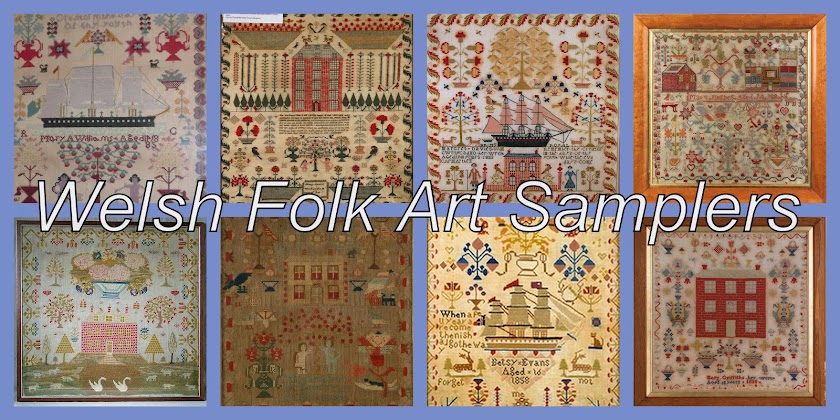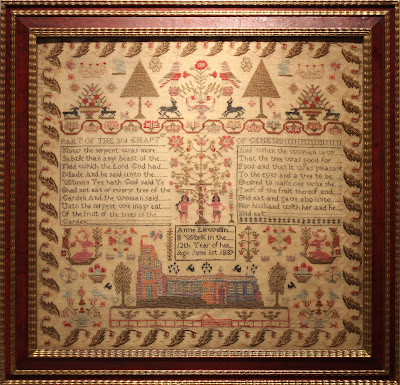The sampler below is on the Finkel and Daughter site, who are well known dealers based in Philadelphia. They sent an image to me a few weeks ago asking if I thought it was Welsh. I was happy to confirm this because it has so many motifs regularly found on Welsh samplers and I believe it comes from Carmarthenshire.
It doesn't really fall into my folk art category because it is quite early for a a Welsh sampler - 1837 and seems to have been worked on a fine wool ground with silk. Around 1850 things changed. Samplers began to be worked on canvas with wool and made by older girls, making them larger, brighter and less detailed, hence my folk art tag. This sampler was made before the divide but the same motifs were used on the later samplers, albeit more crudely and sometimes carelessly worked making them less desirable to sampler collectors!
Well what are the motifs that convinces me that it is Welsh and why Carmarthenshire? Look first at the name. It's obvious really, if a sampler has a Welsh surname I look at it for more clues. This one has Llewellin which is definitely Welsh! Then there is a Church! Churches were very often a main motif on Welsh samplers as too were ships. What of the subsidiary motifs? They aren't intrinsically Welsh as many can be found on other British or even Continental samplers, but many were used repeatedly on samplers made in certain areas of Wales or sometimes to a specific school. This sampler has many motifs found on Carmarthenshire samplers and the border is one that was a favourite in that county.
Keep tuned in and I will show you more on future posts.


No comments:
Post a Comment